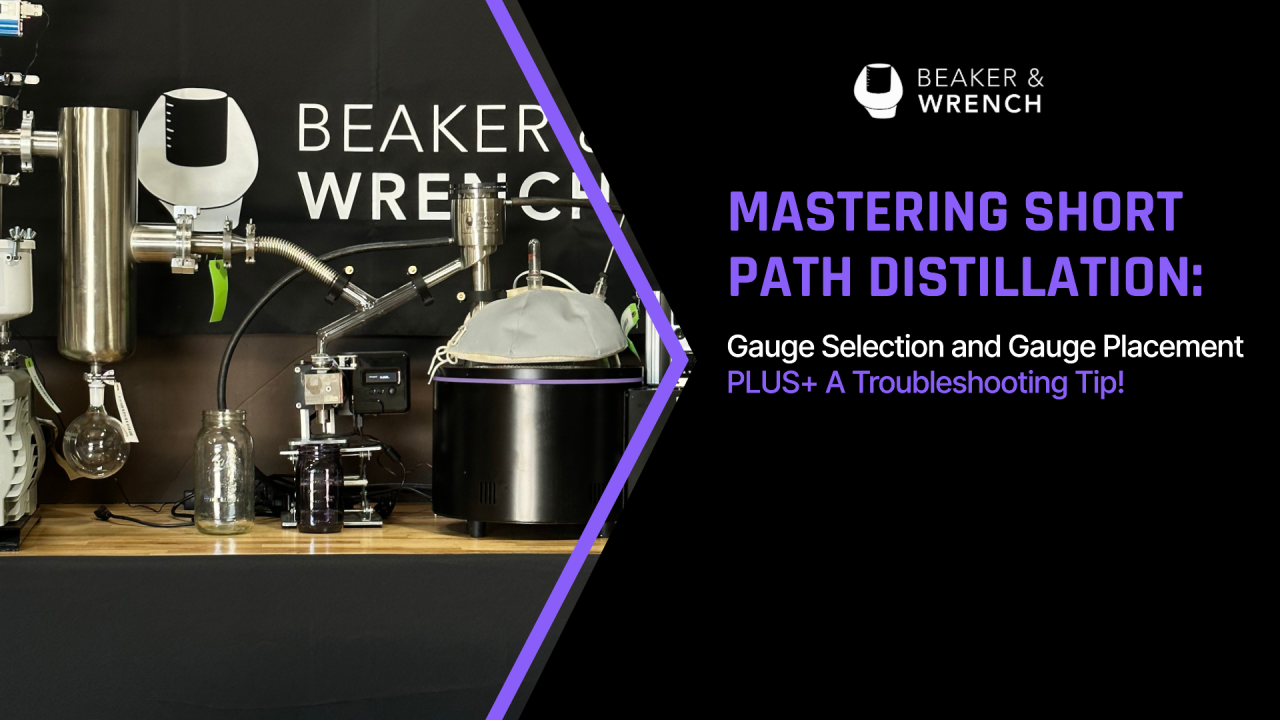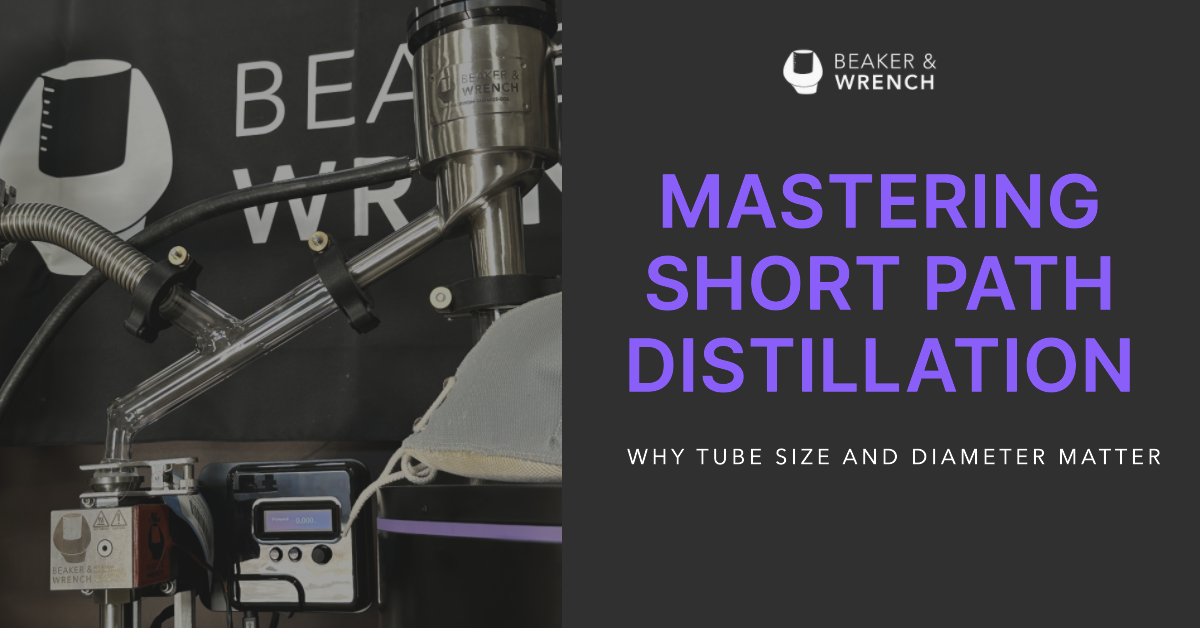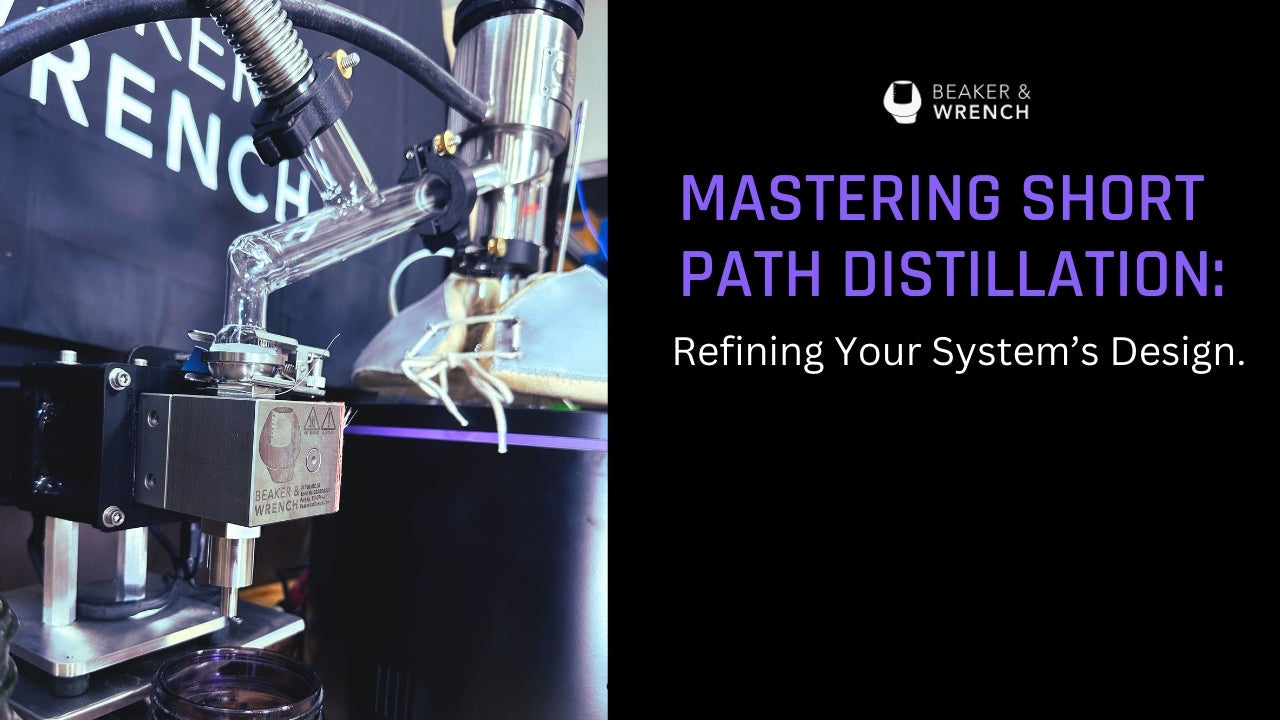If you haven’t read my last blog post Mastering Short Path Distillation: Why Tube Size and Diameter Matter, go back and give it a quick read. I discussed the difference between a viscous flow regime and a molecular flow regime. Why tube size and diameter matter when distilling in a molecular flow regime and why making small adjustments to your tube setup can significantly cut down your processing time; sometimes by half or more.
In the second part of this three part series, I will cover a small but significant tool, the gauge. It is important to select the right gauge for your process and also place the gauge in the correct area to achieve the results you want.
Atmospheric Pressure and Gauge Selection
To understand why the right gauge is so important, I’m going to start by discussing the concept of “Atmospheric Pressure”. I will be referring to vacuum as a positive “absolute pressure”. This is very important because absolute pressure is much more precise than negative gauge pressure. Negative pressure references the concept of atmospheric pressure as “zero”; Atmospheric pressure varies with altitude and weather—much more than the small pressures we’re working with.”
Imagine trying to measure the height of an insect, but instead of measuring from the ground, you measure from the top of a 700-meter-high cliff. The insect is only 3mm tall—tiny compared to the cliff. This is similar to measuring vacuum pressure relative to atmospheric pressure; the numbers are so drastically different that it’s impractical. Instead, measuring the insect from the ground gives you a much more precise and meaningful measurement. This is not an exaggeration, it's just like using absolute pressure instead of relative pressure when dealing with the extremely low pressures in distillation.
By using the insect and cliff analogy, it's easier to understand why a gauge with high-resolution is needed. If you have a gauge that has an analog dial or reads in negative pressure (referenced to atmospheric pressure) it does NOT have enough resolution and is practically useless. Ideally, your gauge should have a resolution down to 1 micron (1mtorr ~0.001mbar ~0.1Pa) or better.
The most common gauges are Pirani and thermocouple. They are the most cost-effective options that offer the resolution needed for your setup. Cheap ($180) “micron gauges” can work but I would recommend investing in a gauge in the $600+ range as their reliability and precision will save time and frustration in the long run.
Gauge selection might seem trivial, but selecting the proper gauge is a small but important detail to take into consideration when investing in your short path setup.
Gauge Placement
Next is gauge placement, usually the gauge is placed after the cold trap and before the isolation valve to the vacuum pump; this protects the valve from process contamination and allows for easy “leak up” tests (discussed later). Just remember that if your gauge is placed closer to the vacuum pump, it will read lower than a gauge placed closer to the evaporation process. Gauges placed close to the pump should reach the ultimate vacuum of your vacuum pump on a dry run. If your gauge is not achieving this, then that means you have leaks in your system.
If your Gauge is placed closer to the evaporation process, then your gauge will be displaying a more accurate reading of the process pressure. In an ideal setup, placing two gauges on your system would give a very clear picture of the pressure drops in your system. This is useful if you are designing a new system but can become redundant as you repeat the same process daily. Ultimately with consistent testing and experience, you should be able to know: how “tight” your system is, the gas load of your process, and the health of your vacuum pump just by looking at the vacuum gauge, regardless of placement.
Regardless of skill level, I cannot stress the importance of a quality gauge with the proper resolution to help you be successful in every distillation run.
Final Thoughts
While often overlooked, selecting the right gauge and placing it correctly can make a significant difference in your short path distillation results. A quality gauge with the right resolution helps ensure precise pressure readings, making troubleshooting easier and improving process efficiency. Consistently performing leak-up tests before each run will help you maintain system integrity and catch issues early. In the final part of this series, I’ll discuss how strategic design can help further boost your distillation process—stay tuned!
BONUS: Troubleshooting tip
Here’s a troubleshooting tip that might help you avoid unnecessary headaches. To make sure that your system is tight and the vacuum pump is ready, you should pull the vacuum on the dry system and do a “leak up” test before every run.
How to perform this test? Set up the system as if you’re going to run material through it but DO NOT pour in process material yet, pull vacuum for 15-30 minutes and note the system pressure, then close the isolation valve to your vacuum pump. Without the pump connected, the pressure will start to rise; note this “leak up” rate. This is a very sensitive way to measure how tight your system is. If the system pressure never gets close to the ultimate pressure of the pump, place the gauge directly on the pump so that you can verify if the gauge and pump are performing to specification before troubleshooting the rest of the system.




Leave a comment
All comments are moderated before being published.
This site is protected by hCaptcha and the hCaptcha Privacy Policy and Terms of Service apply.